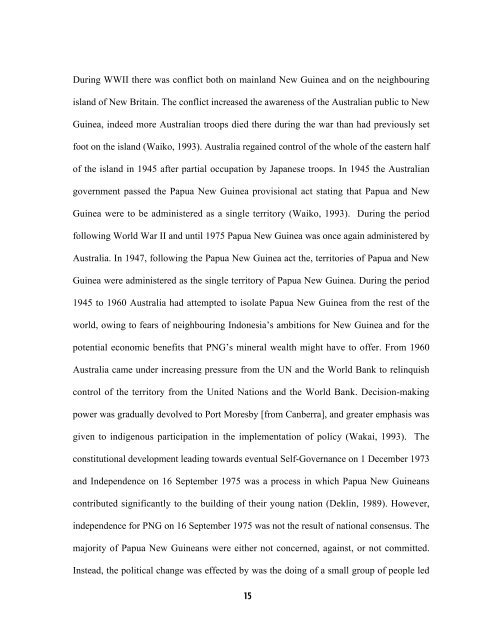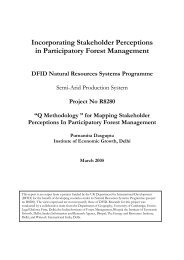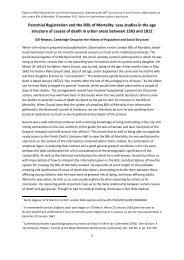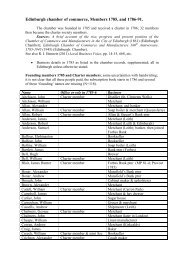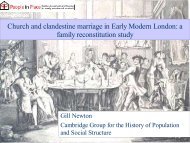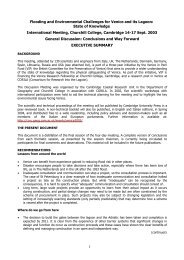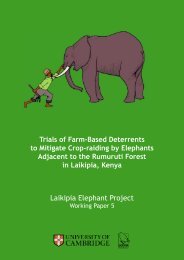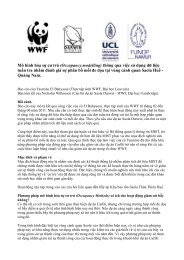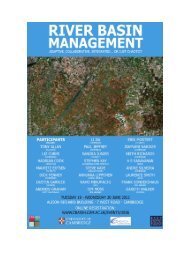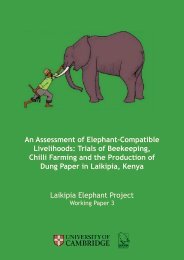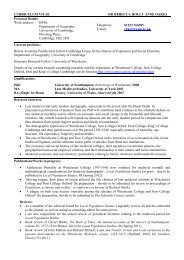Rob Small's Masters Thesis: Uptake and the success of insect ...
Rob Small's Masters Thesis: Uptake and the success of insect ...
Rob Small's Masters Thesis: Uptake and the success of insect ...
You also want an ePaper? Increase the reach of your titles
YUMPU automatically turns print PDFs into web optimized ePapers that Google loves.
During WWII <strong>the</strong>re was conflict both on mainl<strong>and</strong> New Guinea <strong>and</strong> on <strong>the</strong> neighbouring<br />
isl<strong>and</strong> <strong>of</strong> New Britain. The conflict increased <strong>the</strong> awareness <strong>of</strong> <strong>the</strong> Australian public to New<br />
Guinea, indeed more Australian troops died <strong>the</strong>re during <strong>the</strong> war than had previously set<br />
foot on <strong>the</strong> isl<strong>and</strong> (Waiko, 1993). Australia regained control <strong>of</strong> <strong>the</strong> whole <strong>of</strong> <strong>the</strong> eastern half<br />
<strong>of</strong> <strong>the</strong> isl<strong>and</strong> in 1945 after partial occupation by Japanese troops. In 1945 <strong>the</strong> Australian<br />
government passed <strong>the</strong> Papua New Guinea provisional act stating that Papua <strong>and</strong> New<br />
Guinea were to be administered as a single territory (Waiko, 1993). During <strong>the</strong> period<br />
following World War II <strong>and</strong> until 1975 Papua New Guinea was once again administered by<br />
Australia. In 1947, following <strong>the</strong> Papua New Guinea act <strong>the</strong>, territories <strong>of</strong> Papua <strong>and</strong> New<br />
Guinea were administered as <strong>the</strong> single territory <strong>of</strong> Papua New Guinea. During <strong>the</strong> period<br />
1945 to 1960 Australia had attempted to isolate Papua New Guinea from <strong>the</strong> rest <strong>of</strong> <strong>the</strong><br />
world, owing to fears <strong>of</strong> neighbouring Indonesia’s ambitions for New Guinea <strong>and</strong> for <strong>the</strong><br />
potential economic benefits that PNG’s mineral wealth might have to <strong>of</strong>fer. From 1960<br />
Australia came under increasing pressure from <strong>the</strong> UN <strong>and</strong> <strong>the</strong> World Bank to relinquish<br />
control <strong>of</strong> <strong>the</strong> territory from <strong>the</strong> United Nations <strong>and</strong> <strong>the</strong> World Bank. Decision-making<br />
power was gradually devolved to Port Moresby [from Canberra], <strong>and</strong> greater emphasis was<br />
given to indigenous participation in <strong>the</strong> implementation <strong>of</strong> policy (Wakai, 1993). The<br />
constitutional development leading towards eventual Self-Governance on 1 December 1973<br />
<strong>and</strong> Independence on 16 September 1975 was a process in which Papua New Guineans<br />
contributed significantly to <strong>the</strong> building <strong>of</strong> <strong>the</strong>ir young nation (Deklin, 1989). However,<br />
independence for PNG on 16 September 1975 was not <strong>the</strong> result <strong>of</strong> national consensus. The<br />
majority <strong>of</strong> Papua New Guineans were ei<strong>the</strong>r not concerned, against, or not committed.<br />
Instead, <strong>the</strong> political change was effected by was <strong>the</strong> doing <strong>of</strong> a small group <strong>of</strong> people led<br />
15


